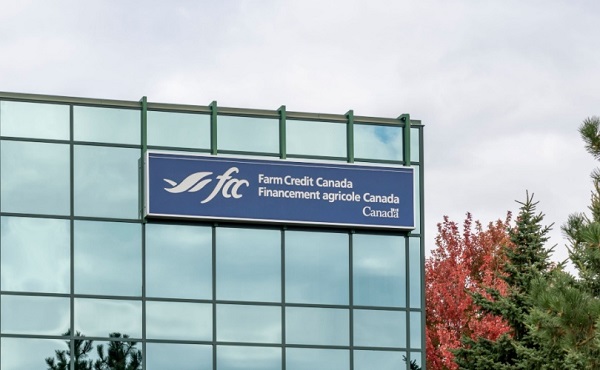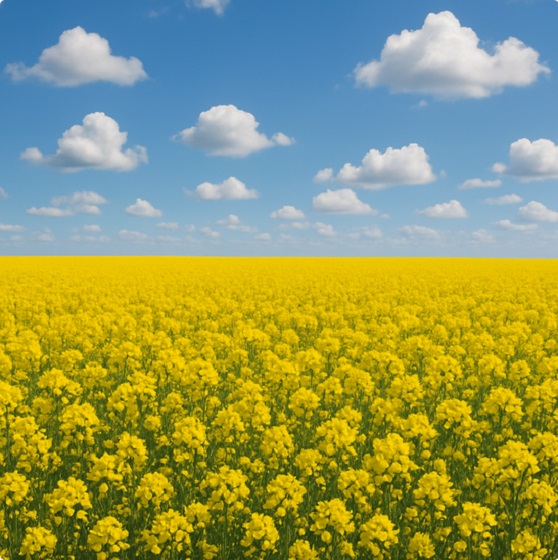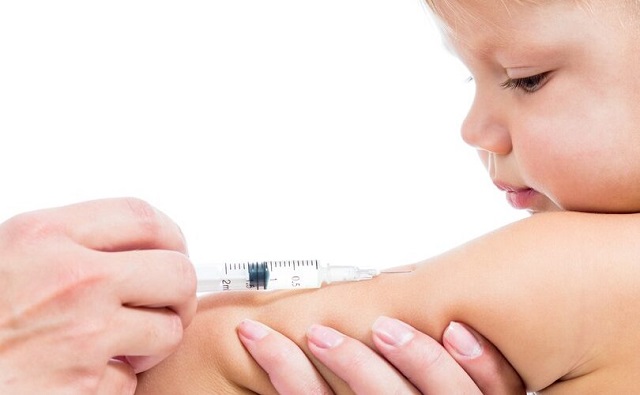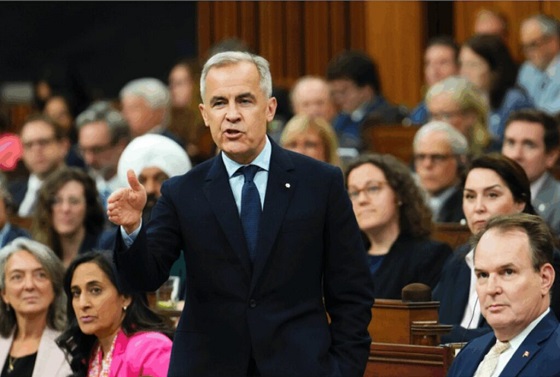Agriculture
Canada’s food supply chain is strong but will world-wide pressures effect It?

Within days of government’s shelter in place orders, there were ridiculous scenes of people fighting over toilet paper along with empty shelves in some other areas of grocery stores, including the fresh meat section. It was an eye-opener of what could come. With the food supply chains facing unprecedented pressures caused by Covid-19, governments have been assuring citizens that there are no food shortages and there is no need to hoard or panic buy.
After the weeks of the ongoing Covid-19 disaster there are cracks showing in the world’s ability to keep all of its citizens fed. Overseas there have already been scenes of hungry people looting food trucks. On April 28th, there were street riots in Lebanon over food price increases.

A food truck gets looted by desperate people near Cape Town, South Africa
A healthy food supply chain relies on predictability
In 2015 the Group of 20 (G20), held a conference to address “…food waste and loss – a major global problem…”. It was a much simpler time. The world-wide food supply chain did not have to deal with a very contagious and complicated coronavirus.
When working properly, a country’s food distribution is a marvel of efficiently and logistics. Delivering massive amounts of fresh food to consumers to every corner of the country, every day. But a chain is only as strong as its weakest link.
“It’s something we don’t like doing, no dairy farmer likes doing it. There are just some real limitations in our supply chain right now.” Karlee Conway with Alberta Milk
There are some scenarios happening in North America that have to be an eye-opener for everyone. Food rotting in the fields, whole crops getting ploughed under, fresh milk getting poured down the drain. The milk dumping is also happening in Canada. Karlee Conway with Alberta Milk said that many farmers are forced to make a difficult decision.
“It’s something we don’t like doing, no dairy farmer likes doing it. There are just some real limitations in our supply chain right now.”
And even more shocking, meat and egg producers in North America have already started culling their animals. A lack of buyers and the closing of processing plants due to sickness and even death of employees.
He and she nailed it
Agriculture Minister Devin Dreeshen said this on March 27:
“Alberta does not have a food supply shortage, but the entire national supply chain should be declared an essential service. There are a lot of moving parts to get food to market and onto kitchen tables. Alberta’s supply chain is responding well, but it is not business as usual.”
Many things have changed since then. Elaine Power, a food security expert at Queen’s University, is more blunt, saying the coronavirus pandemic is exposing “critical weaknesses” in various vital networks, including health care systems and food supply chains. “The people who are already food insecure, that’s only going to get worse. The type of resources that people would normally draw on probably aren’t going to be there.”

Beef ready for sale at a grocery store. Will prices go up? Will there be shortages?
Daily press briefing on April 21st
Prime Minister Justin Trudeau said in regard to the Cargill beef processing plant closing and another major Alberta plant’s production reduction after staff contracting Covid-19:
“We are not at this point anticipating shortages of beef, but prices might go up. We will of course be monitoring that very, very carefully.”
“We stress the importance of avoiding food losses”
On the same day the Prime Minister talked about the Alberta meat processing plants, the G20’s Agriculture and food ministers held an emergency meeting. The G20 makes up more than 80% of the world’s Gross Domestic Product (GDP). At this virtual meeting, the countries agreed to the following:
“Any emergency measures to contain the spread of the COVID-19 pandemic must not create unnecessary barriers to trade or disruption to global food supply chains.” And that, “Under the current challenging circumstances, we stress the importance of avoiding food losses and waste caused by disruptions throughout food supply chains, which could exacerbate food insecurity and nutrition risks and economic loss.”
Easy to say, much harder to do
Just in North America, if the past 5 weeks alone was a test on the G20’s agreed to statement, an “F” has been earned so far.
Our food system is distributed into two main streams; the large bulk volume packaging going to the food service areas and the smaller personal size portions going to consumer stores.
When the full stop happened, restaurants, hotels, schools and the majority of bulk orders stopped. Regular expedited weekly sales were sent to the grocery stores, leaving massive amount of unsold produce in the fields.

Gene McAvoy photo of a farmer plowing under rip tomato plant fields has upset viewers on Facebook.
Gene McAvoy, associate director of stakeholder relations at the University of Florida’s Institute of Food and Agricultural Sciences and president of the NACAA saw the orders stop.
“On March 24th, everything changed, from brokers the orders stopped, everything got quiet. The 25th, (was) super-quiet. Producers were blindsided. Since then tomato (sale) volumes are down 85%, green beans 50%, cabbage is (down about) 50%.”
And it is not just those crop. It’s onions, squash, lettuce and more.
Images of wasted produce and food lines
Without the regular food service industry orders, Florida farmer Paul Allen, in the just first week of April, plowed under more than six million pounds of green beans and cabbages back into his fields. He was far from the only farmer to do this. Allen explains,
“Four million people in the winter season eat lavishly three times a day on cruises from Miami alone. And 120 million tourists per year go to theme parks.”
His sales died up overnight.

Scene of milk dumping in the upstate. made New York Governor to say STOP!
This has lead to hundreds of millions of kilograms and billions of dollars’ worth of life sustaining, nutritious, fresh produce and milk has ended up as rotting waste and dumped down the drain. While, at the same time there were images of thousands of people line up for a food donation.
Countless food banks would gladly take and distribute this lost food. But the food supply system we know is one that is protected, regulated, and inspected. The last few weeks shows that in a world-wide emergency, the system has a few weak links.
On April 27th, after seeing images of milk waste, New York Governor Andrew Cuomo tweeted that he was stepping in to stop the milk dumping, asking that “…dairy producers use the excess milk to make yogurt and cheese that will be distributed to food banks & those in need.”

Helicopter footage from KENS 5 in San Antonio Texas, 10,000 family show up for food.
United Nations warns of famines of ‘biblical proportions’
It’s not just in North America. Problems are showing up around the world. In India, cows are being fed strawberries to get some use out of crops.
The United Nations Food and Agriculture Organization has reported the ‘Hammer Blow’ from the corona virus could by the end of 2020, double the amount of people facing actuate food insecurity to 265 million, up from 130 million in 2019. These numbers lead the UN to warn of the possibility of famines of ‘biblical proportions’ across as many as ‘three dozen countries’.
This kind of pending suffering will be hard to stop when the richest and most generous countries in the world are having their own food supply issues, while taking such a massive hit to their economies.
Spring is the start of Alberta’s growing season
In Alberta, the government has already made a plea for workers to fill as many of the 70,000 jobs in the food supply system. Jobs that are usually filled by temporary foreign workers, another program affected by the pandemic. With the planting season upon us, farmers are deciding how much and what to plant in 2020.
Meat production is a major part of Alberta’s economy
Meat production and processing in Alberta is vital to Canada’s supply of food. The three main beef plants in the province, Cargill in High River, JBS Canada in Brooks and Harmony Beef Company in Balzac, have all had Covid-19 problems. While a lot of the final meat processing can and is completed in production facilities and butcher shops across the country, these three main plants are responsible for 75-80% of the federally-inspected slaughter of the cattle for all of Canada.

Cargill’s High River plant
Meat processing employees work in close quarters, side-by-side on fast moving assembly lines. With this very contagious virus, it has spread through the workforce. At least 759 workers have tested positive for Covid-19 at the Cargill meat processing plant in High River, which has a workforce of 2,000. There are another 408+ people in the community that have tested positive for Covid-19, making this the largest outbreak linked to a single site in Canada. The Cargill plant is now temporarily closed.
At least 276 workers have also tested positive for Covid-19 at the JBS Food Canada beef processing plant in Brooks, with the community itself having over 760 cases. The plant is now down to one shift.
While Alberta and the Canadian governments work together to increase the number of meat inspectors available, Fabian Murphy, president of the Agriculture Union that represents the federal meat inspectors wants safety guarantees. Seven inspectors have already tested positive for the virus at the Cargill plant. Murphy has also stated that it’s only a matter of time before JBS plant in Brooks is also forced to temporarily halt production, stating that a, “14-day shutdown would allow all employees to self-isolate. After (that) production at the facility could resume.”
Pork producers are also under great pressures
The Canadian pork industry across western Canada is under extreme pressure, being called “the worst scenario seen in decades.” Faced with dropping prices for their finished hogs, no buyers for their piglets for finishing and growing backlogs in processing, the concern now is how many family pork farms will go under before this is over?
Production lines in Western Canada plants have been slowed down for better safety for workers. Add to that, US pork processing plants closing because of widespread Covid-19 outbreaks with their workers. Currently there has been a 25% reduction in pork slaughter capacity south of the border. Both the Canadian and the US pork industry producer have warned of large amounts of animals will have to be culled. And it has already started in small scales with larger culls within the next weeks.
Chicken producers are facing the same issues
Chicken producers are also facing the same issues. Sofina Foods Inc., that runs a Lilydale chicken processing plant in Calgary confirmed that one employee tested positive for COVID-19 and is in self-isolation. As well, doctors are investigating two possible cases of COVID-19 found in workers at Mountain View Poultry, near the Town of Okotoks.
British Columbia has at least two chicken processing plants with confirmed growing Covid-19 cases. One plant has temporary closed.
The talk of major animal culls, is not just talk
John Tyson, chairman of Tyson Foods, the world’s second largest processor and marketer of chicken, beef, and pork had very strong comments in a full-page ad published in The New York Times, Washington Post and Arkansas Democrat-Gazette. In part Tyson’s top person said bluntly:
“The food supply chain is breaking. Meat processing plants across the US are closing due to the pandemic. US farmers don’t have anywhere to sell their livestock. Millions of pigs, chickens and cattle will be euthanized because of slaughterhouse closures, limiting supplies at grocers.”
With published reports, the animal culling has already began. One Prince Edward Island farm euthanized market ready hogs and then dumped them in a landfill. Iowa farmer, Al Van Beek said, “What are we going to do?” after ordering 7,500 piglets to be aborted. Daybreak Foods Inc., based in Lake Mills, Wisconsin has used carts and tanks of carbon dioxide to euthanize tens of thousands of healthy egg-laying hens. Eggs are no longer being bought by their customers in the restaurants and food-service business.
USDA sets up “Coordination Centre” to “assist on depopulation”
The U.S. Department of Agriculture (USDA) has posted online:
“The USDA’s Animal and Plant Health Inspection Service (APHIS) is establishing a National Incident Coordination Center to provide direct support to producers whose animals cannot move to market as a result of processing plant closures due to COVID-19. Going forward, APHIS Coordination Center, State Veterinarians, and other state officials will be assisting to help identify potential alternative markets if a producer is unable to move animals, and if necessary, advise and assist on depopulation and disposal methods.”
“We stress the importance of avoiding food losses and waste caused by disruptions throughout food supply chains, which could exacerbate food insecurity and nutrition risks and economic loss.” April 21st G20 agreement.
If the G20 matters, North America, gets an “F” so far
The stress on the food supply chain continues to grow the longer Covid-19 lasts. On April 28th Meat producer JBS said it was reopening a Minnesota pork plant, that was shuttered by the pandemic to euthanize up to 13,000 pigs a day for farmers, not to produce meat for consumers.
Governments must get a handle on the cull of livestock and the billions of dollars of rotting produce meant to go to our populations. There are thousands of people that are hungry. The use of Food Banks in North America has hit new records, with more people needing help every day. But at the same time billions of dollars of food is being destroyed.
What’s wrong with the picture? It is just wrong; the USDA has set-up a Coordination Center to help farmer either sell their products or help kill and dispose of the carcasses in mass. All this, while people go hungry in the same country during a pandemic.
Governments need to step in and redirect this food from a landfill to population that needs it. Until this happens, the links in our food supply chain will continue to be stressed. Food for thought.

A farm tractor is silhouetted against a setting sun near Mossbank, Saskatchewan, Saturday May 11, 2002. (THE CANADIAN PRESS / Adrian Wyld)
PANDAMNIT! Alberta cancels festivals & gatherings over 15 people till September
Agriculture
Federal cabinet calls for Canadian bank used primarily by white farmers to be more diverse

From LifeSiteNews
A finance department review suggested women, youth, Indigenous, LGBTQ, Black and racialized entrepreneurs are underserved by Farm Credit Canada.
The Cabinet of Prime Minister Mark Carney said in a note that a Canadian Crown bank mostly used by farmers is too “white” and not diverse enough in its lending to “traditionally underrepresented groups” such as LGBT minorities.
Farm Credit Canada Regina, in Saskatchewan, is used by thousands of farmers, yet federal cabinet overseers claim its loan portfolio needs greater diversity.
The finance department note, which aims to make amendments to the Farm Credit Canada Act, claims that agriculture is “predominantly older white men.”
Proposed changes to the Act mean the government will mandate “regular legislative reviews to ensure alignment with the needs of the agriculture and agri-food sector.”
“Farm operators are predominantly older white men and farm families tend to have higher average incomes compared to all Canadians,” the note reads.
“Traditionally underrepresented groups such as women, youth, Indigenous, LGBTQ, and Black and racialized entrepreneurs may particularly benefit from regular legislative reviews to better enable Farm Credit Canada to align its activities with their specific needs.”
The text includes no legal amendment, and the finance department did not say why it was brought forward or who asked for the changes.
Canadian census data shows that there are only 590,710 farmers and their families, a number that keeps going down. The average farmer is a 55-year-old male and predominantly Christian, either Catholic or from the United Church.
Data shows that 6.9 percent of farmers are immigrants, with about 3.7 percent being “from racialized groups.”
National census data from 2021 indicates that about four percent of Canadians say they are LGBT; however, those who are farmers is not stated.
Historically, most farmers in Canada are multi-generational descendants of Christian/Catholic Europeans who came to Canada in the mid to late 1800s, mainly from the United Kingdom, Ireland, Ukraine, Russia, Italy, Poland, the Netherlands, Germany, and France.
Agriculture
Farmers Take The Hit While Biofuel Companies Cash In

From the Frontier Centre for Public Policy
Canada’s emissions policy rewards biofuels but punishes the people who grow our food
In the global rush to decarbonize, agriculture faces a contradictory narrative: livestock emissions are condemned as climate threats, while the same crops turned into biofuels are praised as green solutions argues senior fellow Dr. Joseph Fournier. This double standard ignores the natural carbon cycle and the fossil-fuel foundations of modern farming, penalizing food producers while rewarding biofuel makers through skewed carbon accounting and misguided policy incentives.
In the rush to decarbonize our world, agriculture finds itself caught in a bizarre contradiction.
Policymakers and environmental advocates decry methane and carbon dioxide emissions from livestock digestion, respiration and manure decay, labelling them urgent climate threats. Yet they celebrate the same corn and canola crops when diverted to ethanol and biodiesel as heroic offsets against fossil fuels.
Biofuels are good, but food is bad.
This double standard isn’t just inconsistent—it backfires. It ignores the full life cycle of the agricultural sector’s methane and carbon dioxide emissions and the historical reality that modern farming’s productivity owes its existence to hydrocarbons. It’s time to confront these hypocrisies head-on, or we risk chasing illusory credits while penalizing the very system that feeds us.
Let’s take Canada as an example.
It’s estimated that our agriculture sector emits 69 megatonnes (Mt) of carbon dioxide equivalent (CO2e) annually, or 10 per cent of national totals. Around 35 Mt comes from livestock digestion and respiration, including methane produced during digestion and carbon dioxide released through breathing. Manure composting adds another 12 Mt through methane and nitrous oxide.
Even crop residue decomposition is counted in emissions estimates.
Animal digestion and respiration, including burping and flatulence, and the composting of their waste are treated as industrial-scale pollutants.
These aren’t fossil emissions—they’re part of the natural carbon cycle, where last year’s stover or straw returns to the atmosphere after feeding soil life. Yet under United Nations Intergovernmental Panel on Climate Change (IPCC) guidelines adopted by Canada, they’re lumped into “agricultural sources,” making farmers look like climate offenders for doing their job.
Ironically, only 21 per cent—about 14 Mt—of the sector’s emissions come from actual fossil fuel use on the farm.
This inconsistency becomes even more apparent in the case of biofuels.
Feed the corn to cows, and its digestive gases count as a planetary liability. Turn it into ethanol, and suddenly it’s an offset.
Canada’s Clean Fuel Regulations (CFR) mandate a 15 per cent CO2e intensity drop by 2030 using biofuels. In this program, biofuel producers earn offset credits per litre, which become a major part of their revenue, alongside fuel sales.
Critics argue the CFR is essentially a second carbon tax, expected to add up to 17 cents per litre at the pump by 2030, with no consumer rebate this time.
But here’s the rub: crop residue emits carbon dioxide, methane and nitrous oxide whether the grain goes to fuel or food.
Diverting crops to biofuels doesn’t erase these emissions: it just shifts the accounting, rewarding biofuel producers with credits while farmers and ranchers take the emissions hit.
These aren’t theoretical concerns: they’re baked into policy.
If ethanol and biodiesel truly offset emissions, why penalize the same crops when used to feed livestock?
And why penalize farmers for crop residue decomposition while ignoring the emissions from rotting leaves, trees and grass in nature?
This contradiction stems from flawed assumptions and bad math.
Fossil fuels are often blamed, while the agricultural sector’s natural carbon loop is treated like a threat. Policy seems more interested in pinning blame than in understanding how food systems actually work.
This disconnect isn’t new—it’s embedded in the history of agriculture.
Since the Industrial Revolution, mechanization and hydrocarbons have driven abundance. The seed drill and reaper slashed labour needs. Tractors replaced horses, boosting output and reducing the workforce.
Yields exploded with synthetic fertilizers produced from methane and other hydrocarbons.
For every farm worker replaced, a barrel of oil stepped in.
A single modern tractor holds the energy equivalent of 50 to 100 barrels of oil, powering ploughing, planting and harvesting that once relied on sweat and oxen.
We’ve traded human labour for hydrocarbons, feeding billions in the process.
Biofuel offsets claim to reduce this dependence. But by subsidizing crop diversion, they deepen it; more corn for ethanol means more diesel for tractors.
It’s a policy trap: vilify farmers to fund green incentives, all while ignoring the fact that oil props up the table we eat from.
Policymakers must scrap the double standards, adopt full-cycle biogenic accounting, and invest in truly regenerative technologies or lift the emissions burden off farmers entirely.
Dr. Joseph Fournier is a senior fellow at the Frontier Centre for Public Policy. An accomplished scientist and former energy executive, he holds graduate training in chemical physics and has written more than 100 articles on energy, environment and climate science.
-

 Carbon Tax2 days ago
Carbon Tax2 days agoCarney fails to undo Trudeau’s devastating energy policies
-

 Health2 days ago
Health2 days agoNEW STUDY: Infant Vaccine “Intensity” Strongly Predicts Autism Rates Worldwide
-

 Business2 days ago
Business2 days agoThe UN Pushing Carbon Taxes, Punishing Prosperity, And Promoting Poverty
-

 Business1 day ago
Business1 day agoClimate Climbdown: Sacrificing the Canadian Economy for Net-Zero Goals Others Are Abandoning
-

 Alberta1 day ago
Alberta1 day agoAlberta to protect three pro-family laws by invoking notwithstanding clause
-

 Artificial Intelligence1 day ago
Artificial Intelligence1 day agoLawsuit Claims Google Secretly Used Gemini AI to Scan Private Gmail and Chat Data
-

 Health22 hours ago
Health22 hours agoCDC’s Autism Reversal: Inside the Collapse of a 25‑Year Public Health Narrative
-

 Business1 day ago
Business1 day agoCanada is failing dismally at our climate goals. We’re also ruining our economy.



